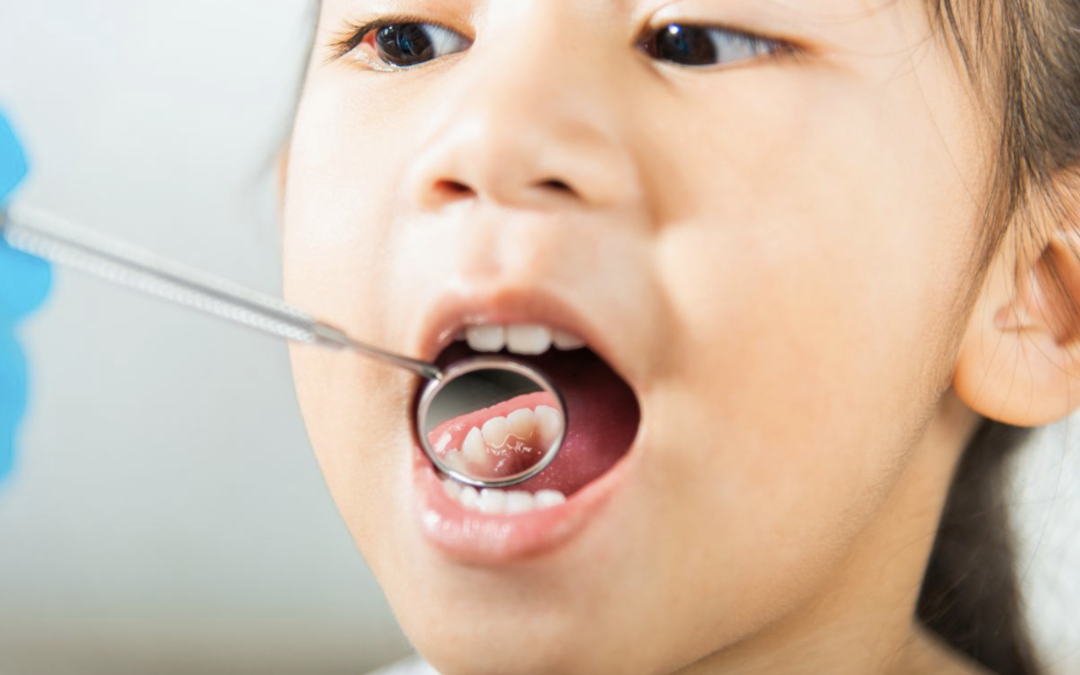Cavities are one of the most common dental issues in children, but they are preventable. And knowing what to watch for at home and when to visit an Edmonton pediatric dentist can make all the difference.
Let’s look at the signs of tooth decay, what causes it, and simple steps to help protect your child’s smile. Because when it comes to kids’ dental health, a little prevention goes a long way!
Signs Your Child Might Have a Cavity
Even with regular brushing, cavities can sneak up on little teeth.
Understanding the early signs of tooth decay gives parents a head start on getting the right care.
Tooth Sensitivity
If your child starts to flinch or avoid certain foods, especially hot, cold, or sweet ones, it may be more than a picky phase. Tooth sensitivity can be an early sign that enamel is wearing down or a cavity is forming.
Children may not always speak up about discomfort, so look for changes in their eating habits.
White Spots
White spots on the surface of a tooth might not seem like a big deal, but they’re often one of the first signs of enamel demineralization. This means that the tooth is beginning to weaken, which can lead to cavities if left unchecked.
Catching these spots early gives your dentist a chance to reinforce the enamel before decay sets in.
Discoloration
Brown or dark spots on your child’s teeth are a more obvious signal that a cavity may be present.
Discoloration can indicate decay that has progressed beyond the enamel into the softer dentin layer of the tooth. While stains can sometimes come from food or drink, persistent spots should always be evaluated by a dentist.
Visible Holes
If you can see a small hole or pit in your child’s tooth, that’s a clear sign that decay has already occurred.
Cavities that reach this stage may require a filling to prevent further damage or discomfort. These holes can trap food and bacteria, which can worsen decay if not treated.
Tooth Pain
Tooth pain is often the most noticeable and distressing sign of a cavity. If your child complains of pain while eating or at night, it’s important to schedule a dental appointment right away.
Pain usually means the cavity has reached a deeper layer of the tooth, where nerves are located.
How Diet Plays a Role in Tooth Decay
What your child eats has a big impact on their dental health.
Being mindful of your child’s diet is one of the easiest ways to help protect their smile between dental visits.
- Sugary Snacks and Drinks: Candy, juice, soda, and even granola bars can coat teeth in sugar, which bacteria convert into acids that damage enamel.
- Sticky Foods: Fruit snacks, gummies, and dried fruit tend to cling to teeth, making it harder for saliva to wash them away.
- Frequent Snacking: Constant snacking keeps acid levels high in the mouth, giving teeth less time to recover and remineralize.
- Low Water Intake: Water helps rinse away food particles and bacteria. Kids who don’t drink enough water may have more plaque buildup.
- Lack of Nutrient-Rich Foods: Teeth need vitamins and minerals, like calcium and phosphorus, to stay strong, and a diet low in these nutrients can increase the risk of cavities.
Encouraging a balanced diet and limiting sugary or sticky snacks can make a big difference in cavity prevention. Pairing healthy eating with regular brushing and checkups gives your child’s teeth the best chance to stay strong.
Why Fluoride and Regular Cleaning Matter
Fluoride helps strengthen tooth enamel, making it more resistant to acid attacks that lead to cavities. Regular brushing with a fluoride toothpaste gives your child’s teeth extra protection every day.
Professional cleanings remove plaque and tartar that brushing alone can’t reach.
They also give your dentist a chance to spot early signs of decay and offer preventive care like fluoride treatments. Together, these steps help keep your child’s smile healthy and cavity-free.
Turning Brushing and Flossing Into a Daily Win
Creating a fun, consistent routine can make brushing and flossing something your child actually looks forward to. Try using a timer, a catchy song, or a sticker chart to keep them engaged.
Letting your child pick their own toothbrush or toothpaste can also boost motivation.
Daily habits like these help remove food and plaque before they turn into cavities. With the right encouragement, healthy routines can become second nature.
Gentle Cavity Treatment from Pediatric Dentists
When cavities do happen, early treatment from a pediatric dentist can keep things simple and stress-free. Our focus is on gentle care, clear communication, and helping kids feel safe every step of the way.
What Happens During Treatment
Your child’s dentist will start with a thorough exam and may take a quick X-ray to check the extent of the cavity. If a filling is needed, the decayed part of the tooth is gently removed and replaced with a tooth-colored material.
The process is done carefully and at your child’s pace, with lots of reassurance along the way.
Pain Management Options for Kids
Pediatric dentists use age-appropriate techniques to keep children comfortable during treatment. This might include numbing gel, local anesthetic, or sedation options depending on the child’s needs and the type of procedure.
The goal is to prevent pain while keeping the experience calm and manageable.
Easing Fear and Building Trust
We know that a positive dental experience can shape how your child feels about oral care for years to come. That’s why we take extra time to explain each step, answer questions, and use child-friendly language.
Calming strategies like distraction, humor, and praise help build trust
Caring for Your Child’s Smile: Find the Right Pediatric Dentist in Edmonton
Spotting cavities early and building strong daily habits can go a long way in protecting your child’s teeth.
At Oxford Dental Office, our Edmonton pediatric dentists are here to provide gentle, personalized care in a welcoming environment. If it’s time for a checkup or you’ve noticed signs of a cavity, we’re ready to help.
Book your child’s appointment today and give their smile the care it deserves.

